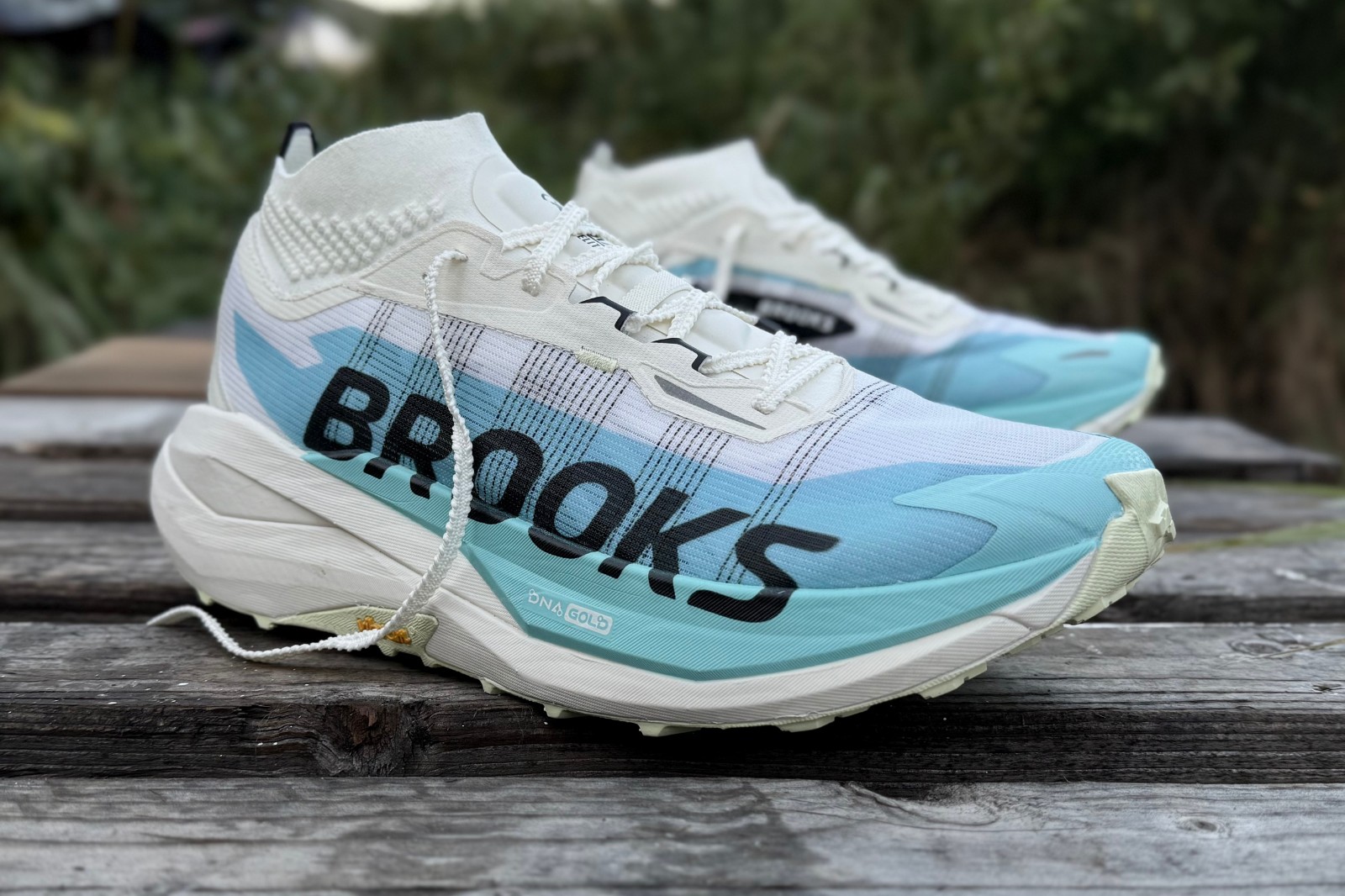
We independently review everything we recommend. When you buy through our links, we may earn a commission.
10.2 oz. (288 g) for a US M10.5 / 9.5 oz. (266 g) for a US W10.5
30 mm in heel, 24mm in forefoot (6 mm drop, midsole only)
Long-distance trail racing
DNA Gold midsole, Matryx upper with integrated bootie, Vibram Megagrip Elite outsole, SpeedVault Plus trail plate
Available March, 2026 for $275















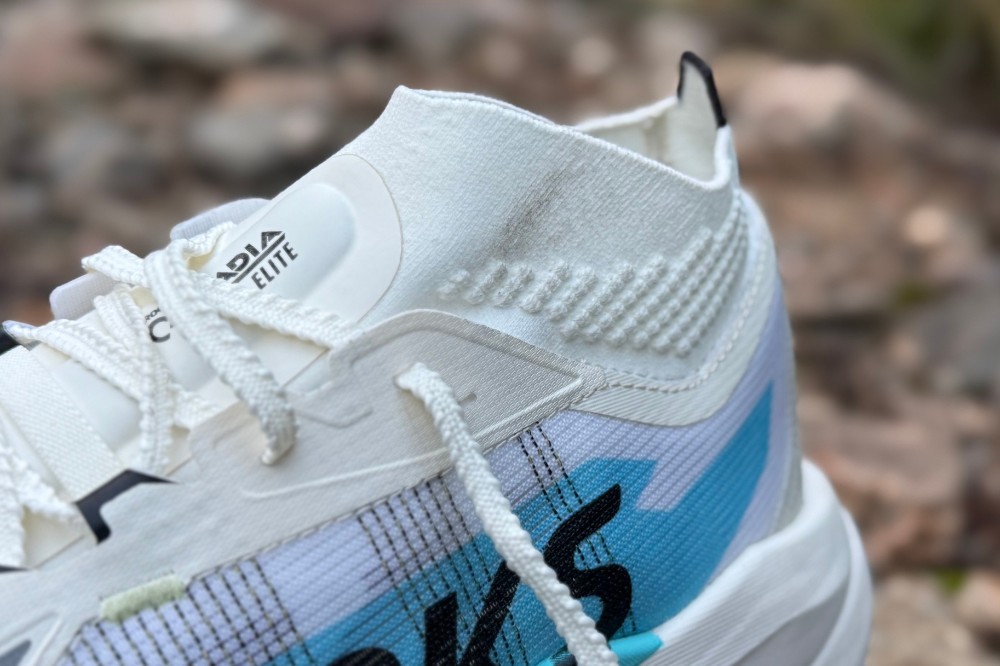
TAYLOR: Tell me the first thing that comes to mind when I say Brooks.
Was it, perhaps, the Ghost? If so, boring, but I get it. Maybe you’re more of a trail runner, which made you go to the legend himself, Scotty J. Or, in the same vein, maybe it was one of the OG shoes that made trail running a thing, the Cascadia.
Either way, it’s not likely that the leading edge of innovation is what came to mind. Brooks has provided consistency on all surfaces rather than pulse-quickening fun. Honestly, it’s a fairly boring approach, but it sells. Even the most recent Brooks Cascadia 19, although not significantly different from its predecessors, still received a positive review from us — it just works.
To be fair, there have been some tantalizing additions with one of our favorite technical terrain runners, the Catamount Agil. The Brooks Catamount 2 and 3 garnered high praise from us as well. Oh! We cannot forget the most recent max-stack trail option, the Brooks Caldera 8. Without necessarily pushing the envelope with their most recent offerings, Brooks has built a sneakily stellar repertoire.
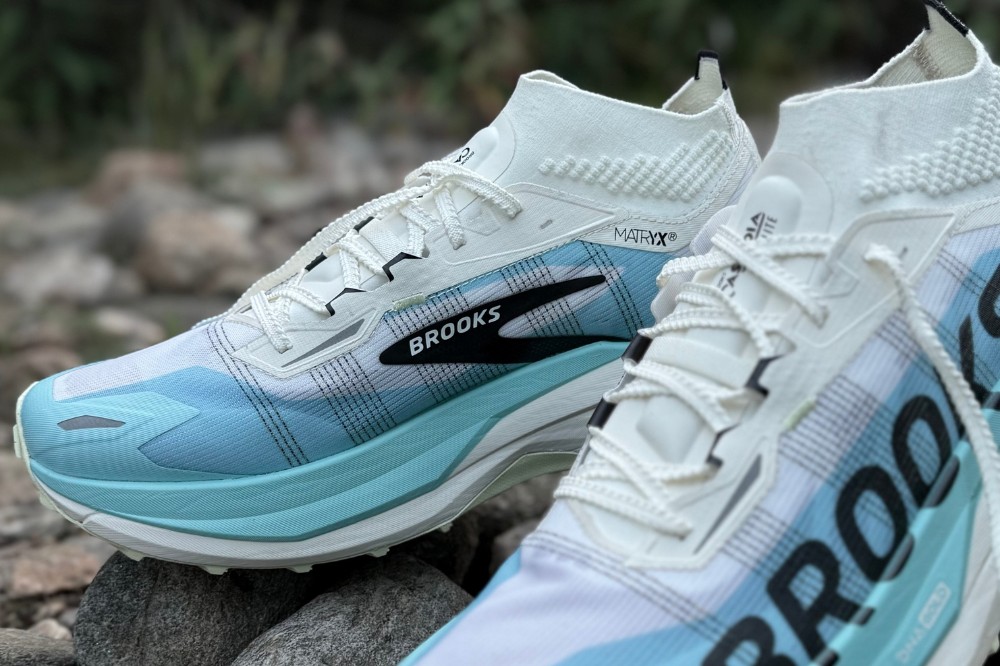
I guess Brooks decided it was time to flip that script. In what seemed like a Banana Ball out of left field throw, the standard stallions released their new trail beast. Obviously, this comes with excitement of its own, but it does especially after the Catamount 4, which sounded so good on paper but didn’t translate to performance IMO.
Anyways… We’re all here for the same thing and with the same questions. On paper, the Brooks Cascadia Elite exclaims promise. And, with many of these trail “super shoes” using a similar formula but relying on unique tweaks to set them apart, it was time to find out what Brooks had in store.
The standout aspects, obviously, are the high-end DNA Gold midsole that has only been found in a few road running options like the Brooks Hyperion Elite 5, Hyperion Max 3, and Hyperion Elite 4 PB. Within that PEBA midsole sits a carbon-infused Pebax SkyVault Plus Trail plate, which takes on a very different shape to its road counterparts. In the upper, Matryx is important, as always, but more noticeable is the high, sock-like integrated collar. Down below, you’ve got Vibram Megagrip Elite to chew up the trails.
By golly, Bobby! That’s one heck of a lineup! This is Brooks’ best chance at shaking up the prevailing performance perception.
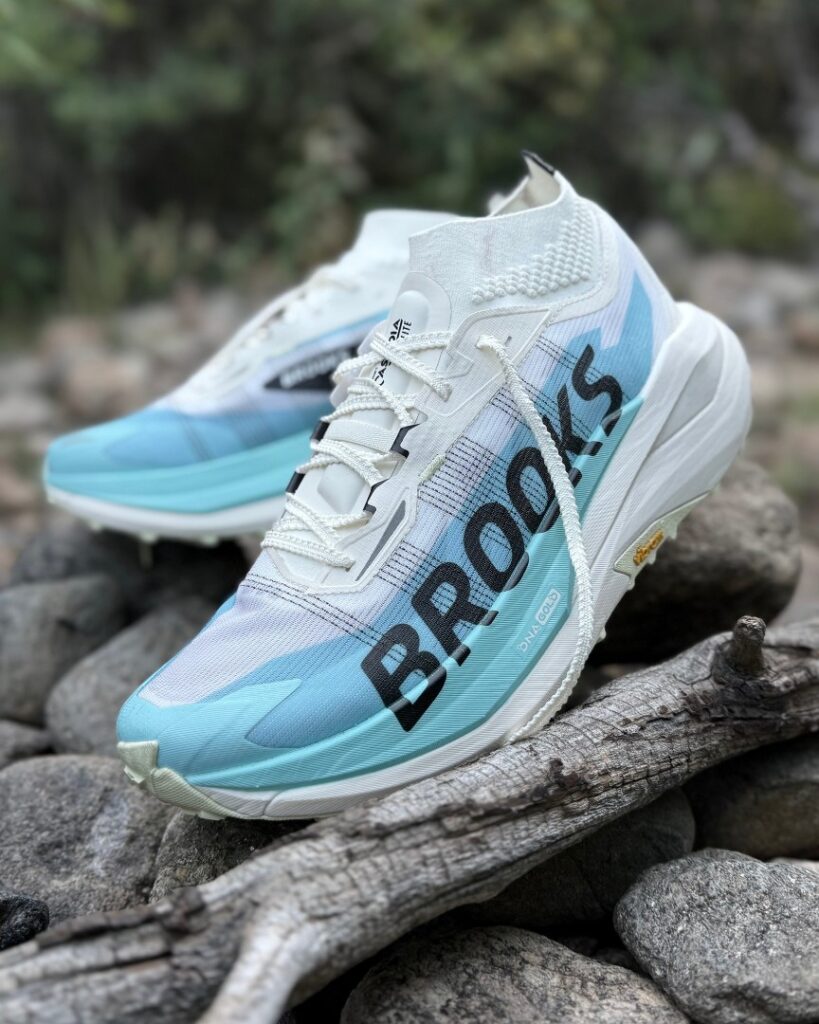
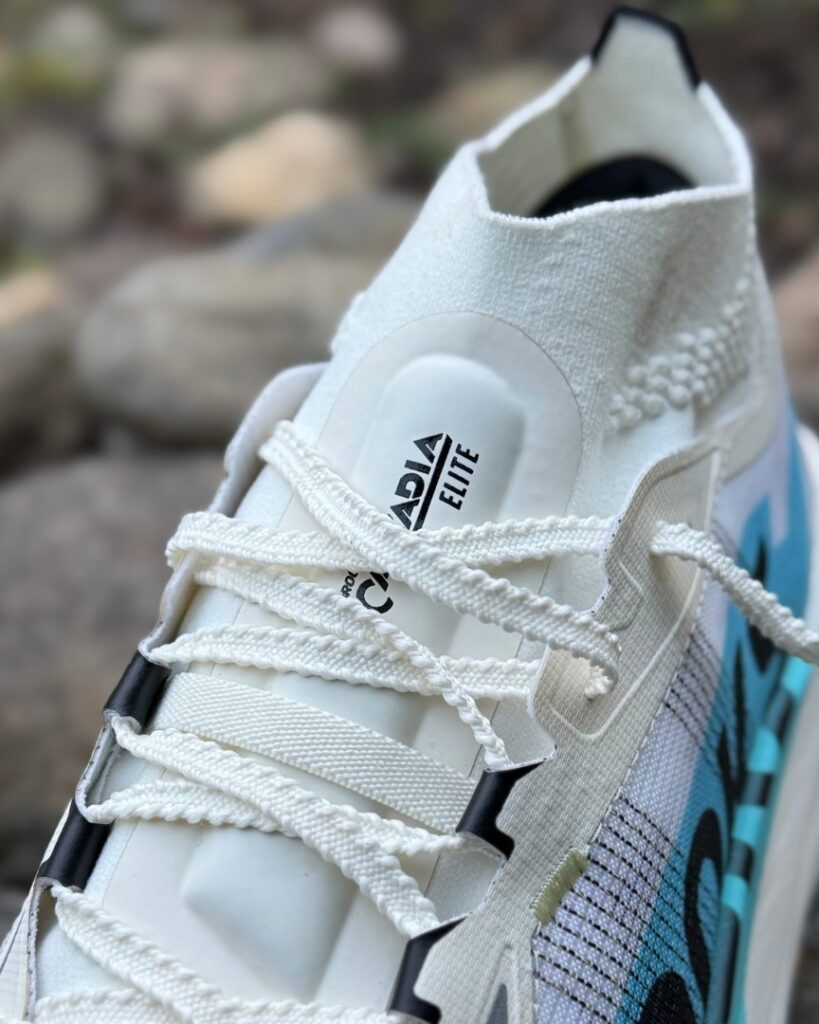
TAYLOR: We need a complete, top-down analysis here because every single part of the Brooks Cascadia Elite is noticeable from the moment you start running.
Fit has always been of utmost importance for trail running performance, and Brooks typically has a great last (mold that the shoe is formed on) that allows for comfort and confidence. It’s also worth noting that Brooks’ shoes tend to be fairly accommodating. The Cascadia Elite is as well, especially in the forefoot and into the midfoot. It reminds me of the Caldera 8’s width to provide splay with the Catamount Agil’s slightly lower vertical volume that sandwiches the forefoot. For an “ultra distance” performer, I appreciated the attention toward being a technical performer, too.
The further heel-ward you go in the shoe, the more technical the fit feels. This is thanks to three aspects: the mapped Matrix upper, the structured heel, and the integrated knit sock.
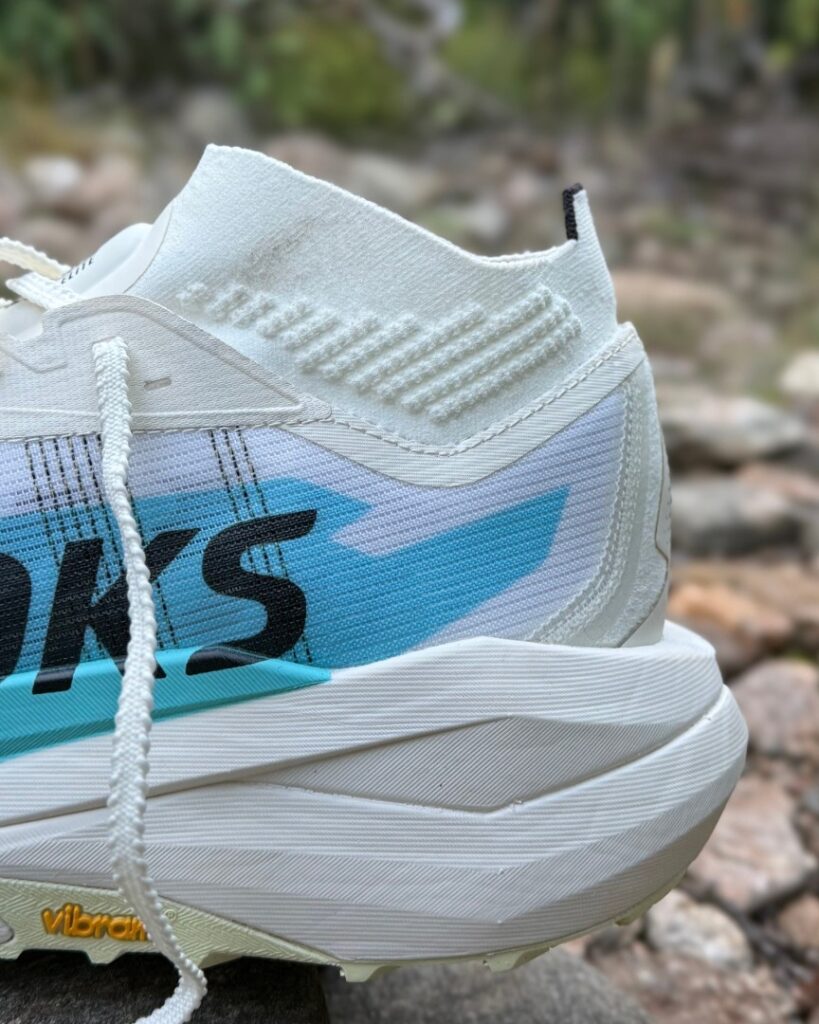
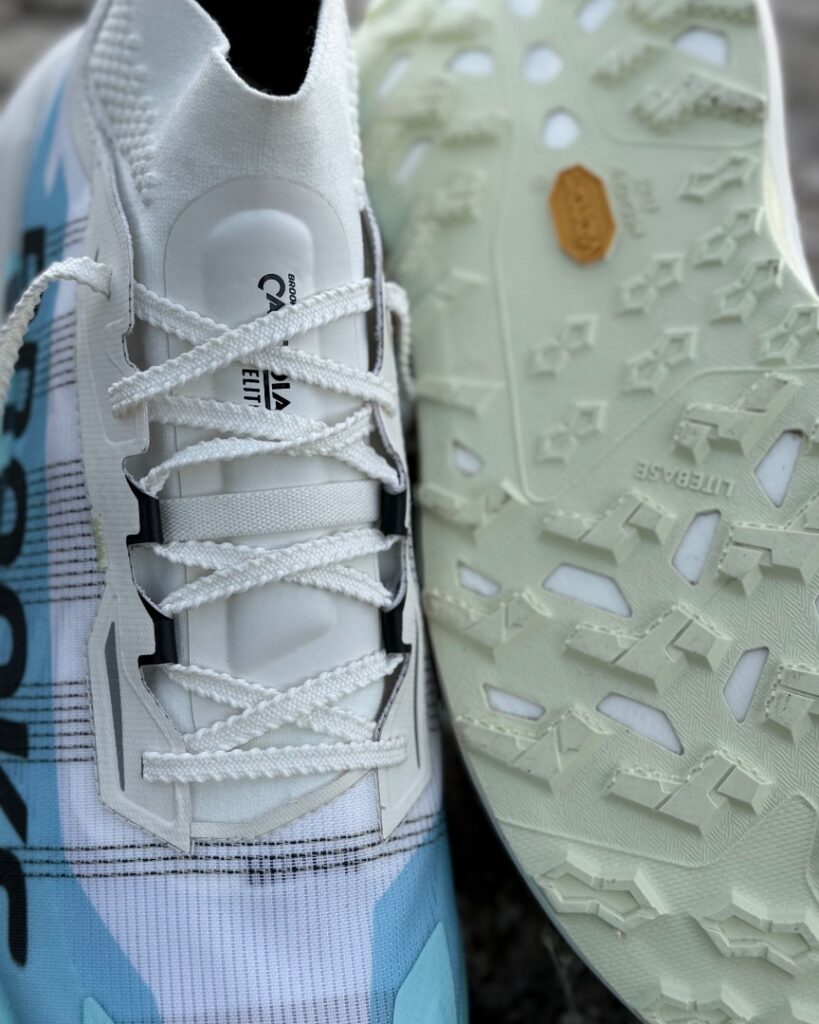
Matryx has made a name for itself in the past for being very durable and lightweight. That’s the same here. In recent history, they have also become known for a precise, lasting fit. This seamless upper tends to create a full-valued confidence. The story isn’t any different in the Brooks Cascadia Elite.
Typically, a more strategic set of eyelets is used in the midfoot for a more tuned fit. The Cascadia Elite bumps those down toward the forefoot. I liked this move as it helped mitigate some of the forefoot slip I had during initial runs.
The integrated knit sock and built-in structure through the heel really assisted with a more secure fit. It was the one location that really felt solidly secure. Even though the Hoka Tecton X 3 also had an integrated booty and Matryx upper, the Brooks Cascadia Elite’s fit was leagues better for me. This structure is a true game-changer in a recipe like this. Overall, the fit fell somewhere between the ultra-oriented comfort found in the Tecton X 3 and the techy confidence of the La Sportiva Prodigio Pro.
Besides comfort and obvious security, the booty also provided a light amount of perceived ankle stability.
Serrated “race day” laces helped maintain the fit throughout my runs. Simple as that.
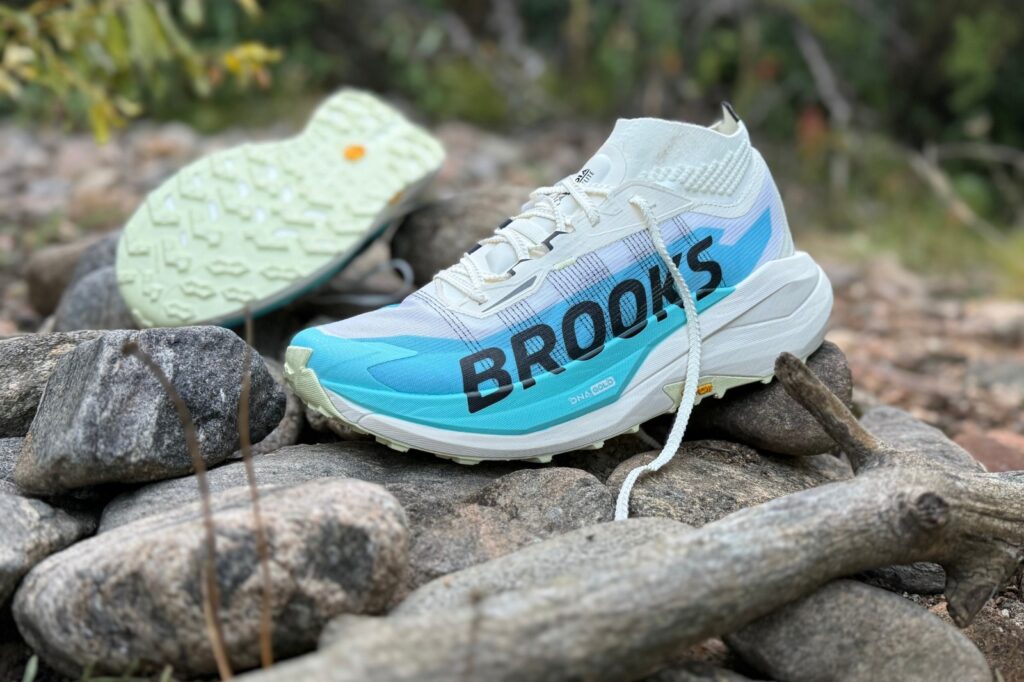
If the budget allows, I vote for Goldmember to do the ad read because this stuff is gold. Brooks’ new DNA Gold midsole is reportedly made of 100% PEBA material. If you have been in either of their road racing shoes that have it, the foam in the Cascadia Elite feels a bit denser.
Like in one of my all-time faves, the North Face Vectiv Pro 2, the midsole concoction strikes a really nice balance of soft cushion and true energy return without feeling too unstable for rockin’ and rollin’ on the trails. I have a hunch that this is largely due to the SkyVault Plus plate adding stability, but, again, this foam falls into the softer end of the spectrum without being overly mushy.
There was a little bit of a density shift from the forefoot to the heel. Even though the heel has a higher stack of foam, it’s actually the forefoot that feels softer because of the plate construction opening up in the forefoot. There’s really not much underfoot there, and I appreciated the amount of cushion and subtle amounts of ground feel.
Another aspect that aligns with many of our favorite long-distance trail racers of this year (i.e., On Cloudultra Pro, Puma Deviate Nitro Elite Trail, La Sportiva Prodigio Pro, and even the Hoka Rocket X Trail) is that the Brooks Cascadia Elite prioritizes efficiency. The forefoot rocker is noticeable, but it certainly isn’t extreme. This one actually has one of the more subtle rockers, and it plays well with moderate to technical terrain, providing a “grounded” and controlled sensation.
Let’s talk a bit more about that SkyVault Plus plate. It’s a blend of carbon and Pebax materials. Based on that, we know it’s lightweight and features some strategic shaping for the trails. This is one of the more unique plate designs, as it features a horseshoe shape that runs along the rim of the shoe, from the sides of the forefoot to the heel.
I didn’t necessarily feel a lot of zing, but I did appreciate the nice amount of rigidity underfoot, which complements the foam and wider base. What I did feel was a truly performance-enhancing mode of stability. Think about better control and less fatigue over time, rather than straight up pop. Honestly, the plate felt most at work through the midfoot and heel than in the forefoot, which, seeing the plate, helped confirm exactly why I felt that in my experience. The further back you go in the shoe, the closer together the plate arms become, providing more structure and stability underfoot — a great use of innovative technology for the trails.
Our experience with the Vibram Megagrip Elite goes two-for-two. We’ve only ever seen it on the Norda 005, where we were impressed with its lightweight stature and completely expected grip from Vibram. The 3.5 mm Traction Lugs rocked. I have no signs of wear, which is typically my concern when a rubber chooses to go softer for more tackiness. Additionally, they held up on a variety of surfaces and conditions, even in some softer mud and sandy areas. Of course, the wider platform means more ground contact. So that’s a perk here too.
Shop The Shoe - Men Shop The Shoe - Women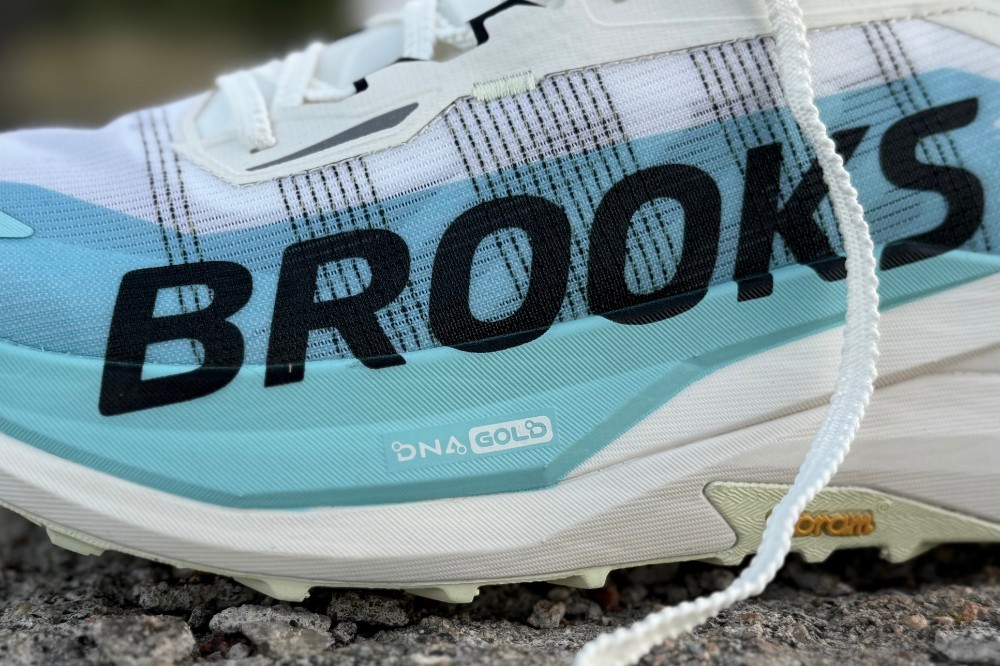
TAYLOR: As much as I praised the fit previously, my only two complaints come in that department, too.
The first is with the broader forefoot. I do love the overall fit and shape that will be complementary for long-distance running. I did experience some forefoot slipping when trotting over more technical terrain and switchbacks at a quicker pace. Take this with a grain of salt because I was able to mitigate that issue by simply cinching up at the bottom end of the lacing chain. That’s when I really appreciated the more strategic holes in the forefoot.
However, that’s when another issue arose. The extra tension on the laces also gave some lace bite over the top of my midfoot. The padding is embedded into the knit sock, but it wasn’t substantial enough to mask this sensation.
Now, I’m all for being precise with lacing, but it took a while to figure this one out to achieve both satisfactory forefoot security and comfort. I was able to make that happen for the most part. To go a long distance over more technical terrain, I would need to sacrifice a little bit of one for the other.
Shop The Shoe - Men Shop The Shoe - Women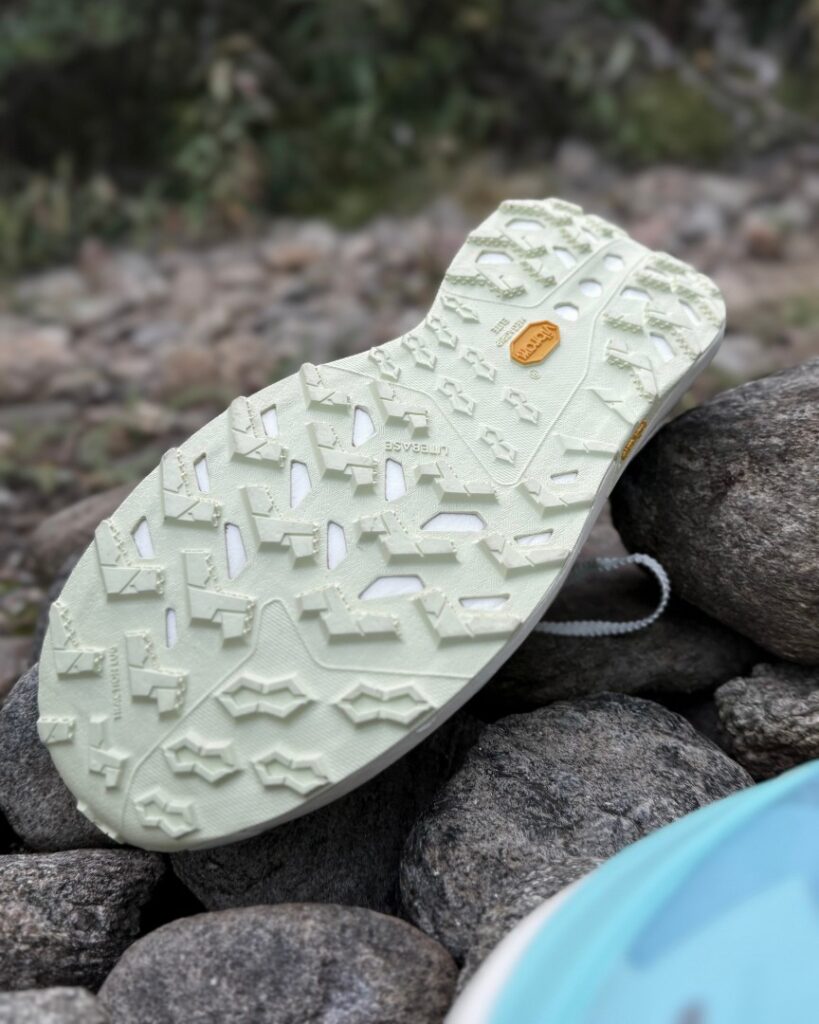
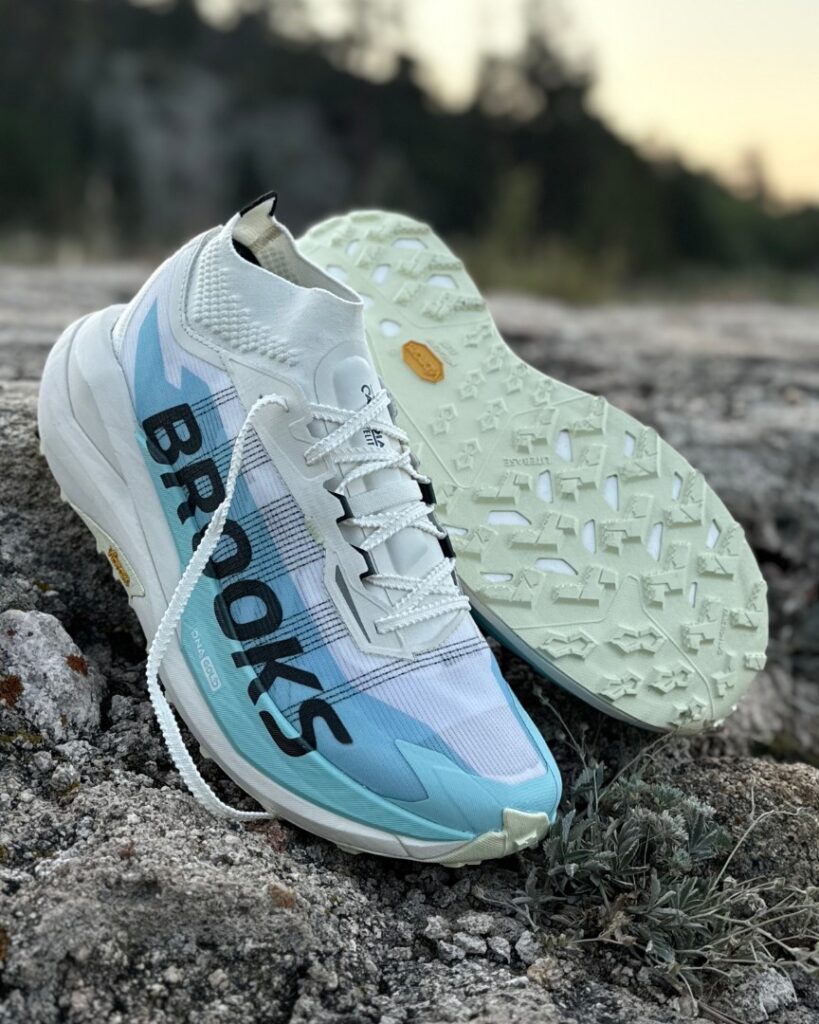
TAYLOR: Coming off a hot 2024, Brooks said that they were going to keep on the pedal. Apparently, the Brooks Cascadia Elite was what they meant.
With that, I say, finally! In terms of high-performing long-distance offerings, the heritage brand really hasn’t had one. The Cascadia Elite both eclipses the performance of any of their race-day options and complements their current offerings too.
Because of quality ingredients, a tuned fit, efficient ride, and supreme comfort, the Brooks Cascadia Elite not only sticks its nose into the mix of best long-distance trail racers, it confidently vies for a top spot.
While this one doesn’t debut until Spring 2026, it will give you some time to save up the $275 for the shoe, plus some extra dough to choose your next ultra to test it in.
You can pick up the Brooks Cascadia Elite for $275 on March 1, 2026, from Running Warehouse (featuring free shipping and 90-day returns) by using the buttons below.
Shop The Shoe - Men Shop The Shoe - WomenHave something to say? Leave a Comment

Taylor Bodin is a trail and ultra runner living in Estes Park, Colo., with his wife and daughters. As the head of the Dirt Division at Believe in the Run, trail running is pretty much the only hobby he can manage right now and loves it. Every so often, he will pop off a race or FKT attempt because competition is pure and the original motivator for him getting into running anyway.
More from Taylor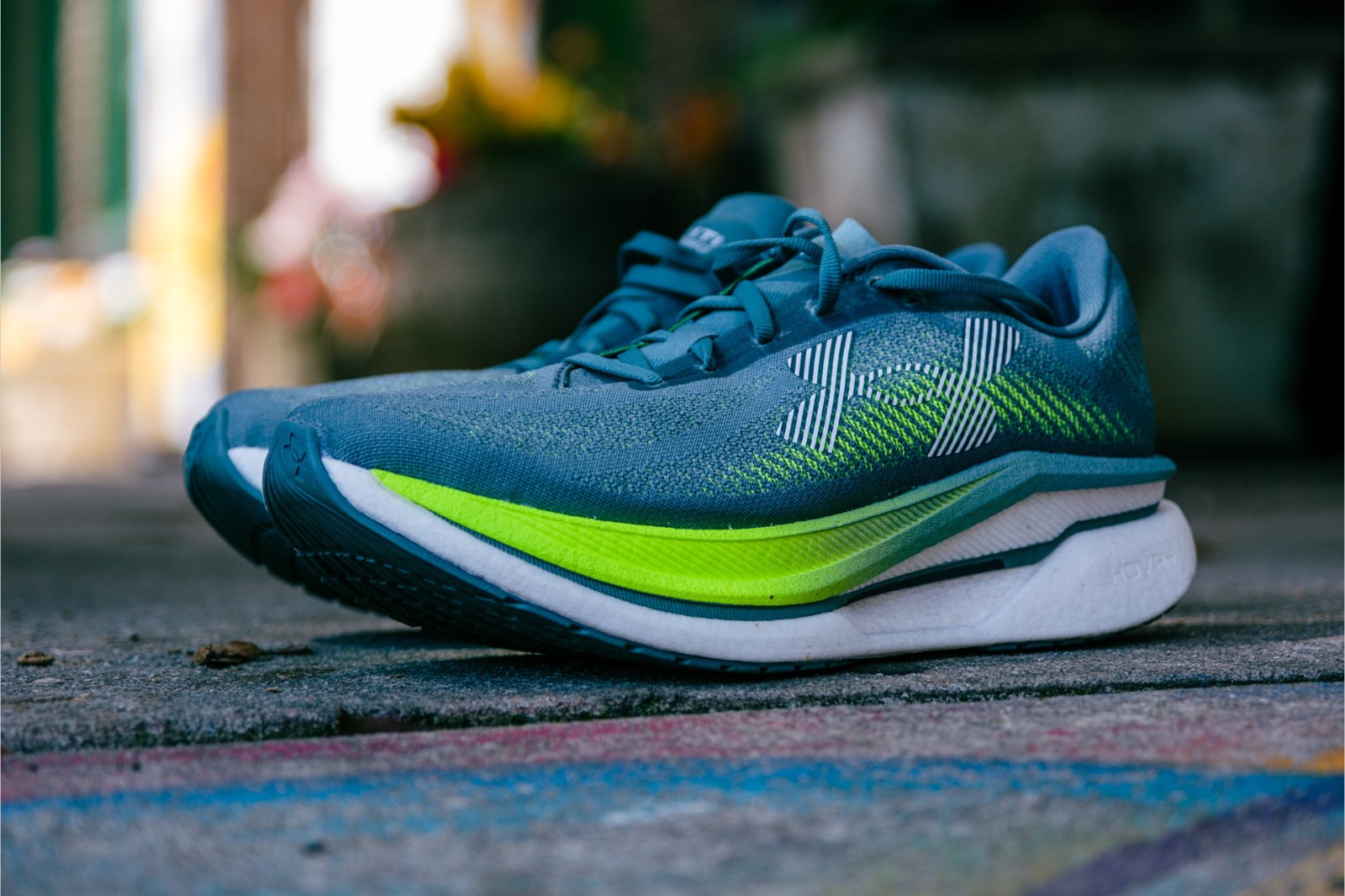
These look great, but a $275 trail shoe better be extra special when you can get a TNF Enduris 4 on sale for around $110 these days that also has great foam, good stability and protection. Sure, the Enduris has a worse upper, doesn’t look as slick, lacks a bootie that some might crave, and has a nylon not carbon plate, but if you’re not pushing pace records, most of these are non-issues. Yes, this looks better than the Hoka Tecton X 3, though, so for super racers, more power to you! I’ll keep my extra cash.